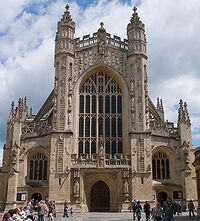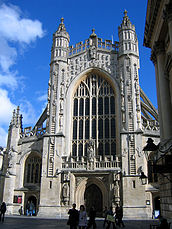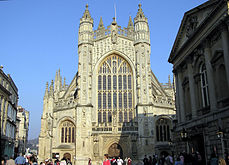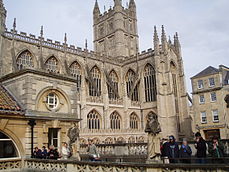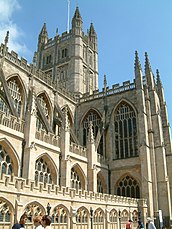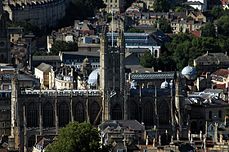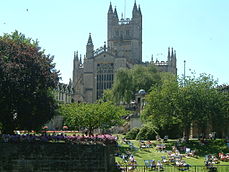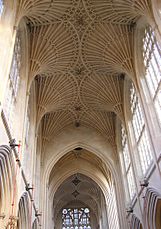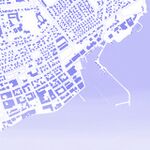Inscríbete y crea tu propia colección de obras y artículos
Diferencia entre revisiones de «Abadía de Bath»
Ir a la navegaciónIr a la búsqueda
Sin resumen de edición |
m (Texto reemplaza - ' area ' a ' área ') |
||
| Línea 17: | Línea 17: | ||
Joint cathedral status was awarded by [[Pope Innocent IV]] to [[Diocese of Bath and Wells|Bath and Wells]] in 1245. [[Roger of Salisbury, bishop of Bath and Wells|Roger of Salisbury]] was appointed the first [[Bishop]] [[Bishop of Bath and Wells|of Bath and Wells]], having been Bishop of Bath for a year previously. However, later bishops preferred Wells, the canons of which had successfully petitioned various popes down the years for Wells to regain cathedral status. Bath Cathedral gradually fell into disrepair. | Joint cathedral status was awarded by [[Pope Innocent IV]] to [[Diocese of Bath and Wells|Bath and Wells]] in 1245. [[Roger of Salisbury, bishop of Bath and Wells|Roger of Salisbury]] was appointed the first [[Bishop]] [[Bishop of Bath and Wells|of Bath and Wells]], having been Bishop of Bath for a year previously. However, later bishops preferred Wells, the canons of which had successfully petitioned various popes down the years for Wells to regain cathedral status. Bath Cathedral gradually fell into disrepair. | ||
When [[Oliver King]], Bishop of Bath and Wells 1495–1503, visited Bath in 1499 he was shocked to find this famous church in ruins. He took a year to consider what action to take, before writing to the Prior of Bath in October 1500 to explain that a large amount of the priory income would be dedicated to rebuilding the cathedral. Work probably began the following spring. Bishop King planned a smaller church, covering the | When [[Oliver King]], Bishop of Bath and Wells 1495–1503, visited Bath in 1499 he was shocked to find this famous church in ruins. He took a year to consider what action to take, before writing to the Prior of Bath in October 1500 to explain that a large amount of the priory income would be dedicated to rebuilding the cathedral. Work probably began the following spring. Bishop King planned a smaller church, covering the área of the Norman nave only. He did not live to see the result, but the restoration of the cathedral was completed just a few years before the [[Dissolution of the Monasteries]] in 1539. | ||
===The Reformation and subsequent decline=== | ===The Reformation and subsequent decline=== | ||
Revisión del 11:48 10 ago 2015
La Abadía de San Pedro en Bath (Somerset, Inglaterra), más conocida simplemente como Abadía de Bath es una iglesia anglicana, y anteriormente un monasterio Benedictino. Fundada en el siglo VII, reorganizada en el siglo X y reconstruida en los siglos XII|XII y XVI, es uno de los mayores ejemplos de Gótico perpendicular del sudoeste de Inglaterra. Se trata de una iglesia de planta cruciforme, con capacidad para aproximadamente 1.200 personas. Se emplea para servicios religiosos, ceremonias civiles y conferencias.[1]
Otras imágenes
Detalle de los ángeles que suben y bajan por la Escalera de Jacob, fachada oeste
Referencias
- ↑
Bath Abbey. Bath Abbey. Consultado el 2007-09-27.
